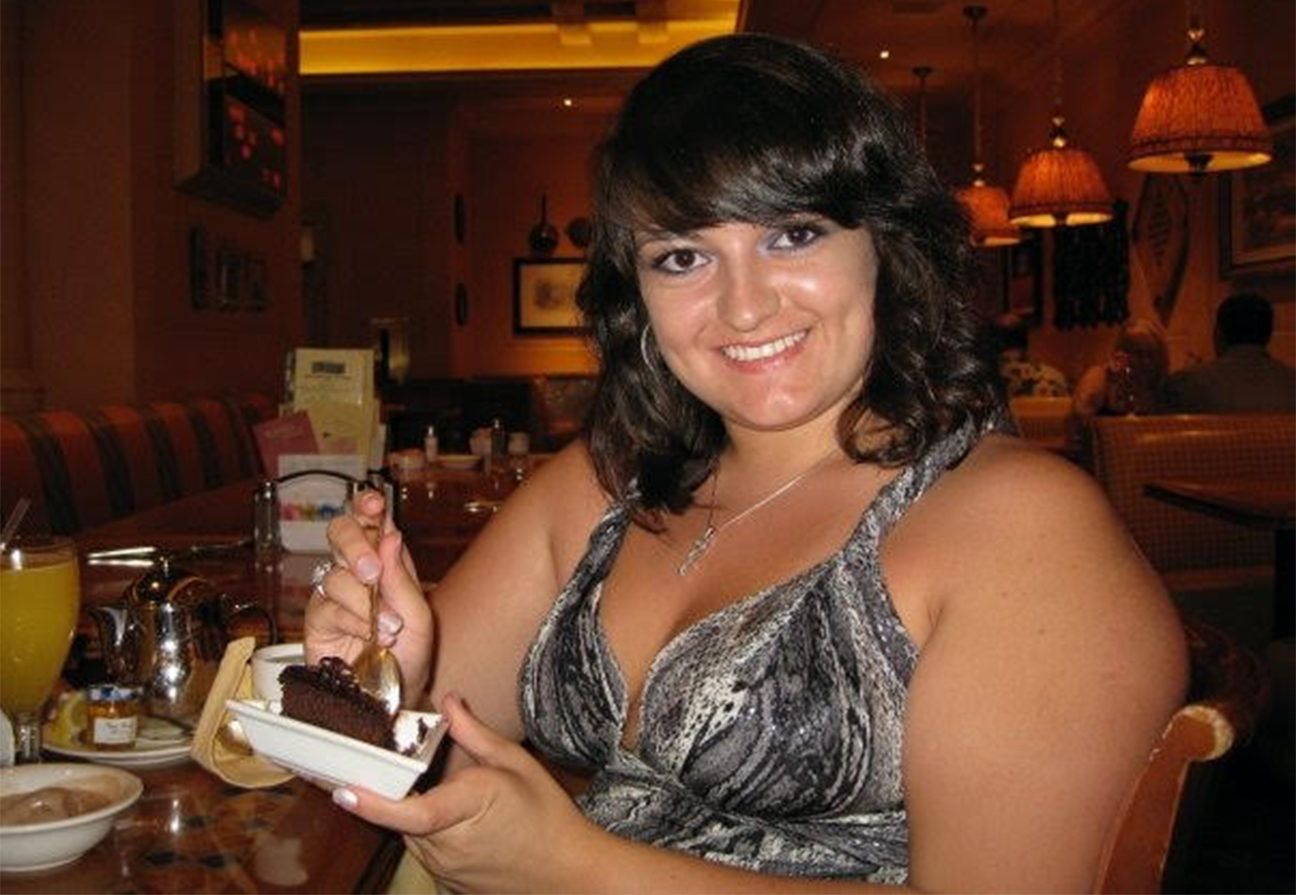Two months before my 23rd birthday, I woke up in a hospital room in Colombia with my stomach feeling like there were a thousand needles inside it. The pain was almost unbearable — but I knew it was for a good reason.
I had just come out of a gastric bypass operation in which my doctor created a small pouch from my stomach, bypassed a portion of my small intestine, and connected them to each other.
At 22 years old, I had just undergone weight loss surgery.
I wasn’t necessarily what most people picture when they imagine someone who makes the difficult decision to undergo such a dramatic and potentially life-threatening operation. I was young and, as friends put it at the time, “didn’t look that big.”
I had always carried my weight fairly well, thanks to my Latina curves. It was mostly evenly distributed, with the most noticeable concentration of excess weight appearing on my butt and very ample (or, as I called them, enormous) thighs, which I hid via dresses that emphasized my smaller waist. I had learned to cleverly disguise the legs I had been ashamed of since I was 10 years old.
But at 5 feet, 2 inches tall and weighing in at over 230 pounds at my peak, I was squarely in the morbidly obese category.
After losing weight through Weight Watchers in college, quickly gaining it back during my first year in the “real world,” and subsequently struggling to lose it again, I was ready to give up.
Then, over Thanksgiving, my parents suggested we visit their friend’s doctor in Barranquilla, Colombia. The doctor had already performed gastric bypass surgery on several of my parents’ friends, including my childhood best friend’s father, who had weighed over 400 pounds for as long as I’d known him.
Bolstered by their stories, I agreed. A week after New Year’s, I was off for my own surgery in a foreign country — excited and terrified at once.
A year later, I was down 100 pounds and thrilled with my success.
Although losing weight is fairly easy after weight loss surgery, the journey is still difficult. I remember how little I was able to eat in the first few months, as I adjusted to my newly smaller stomach and healed from the operation.
Unfortunately, this is a common side effect of weight loss surgery. My eyes remembered the portions I’d eaten before. Although I cut down my portions significantly after surgery, I still had a hard time getting used to my new stomach, which my doctor told me was about the size of an egg.
In the first year after surgery, I remembered something that my doctor had told me the day before my operation:
And so I did. After losing those initial 100 pounds by eating very small portions, I knew things had to change. I was used to eating whatever I wanted — just in smaller doses. But I couldn’t continue to have my favorite Cuban foods at home or eat out as often as I did — at least not if I wanted to keep those 100 pounds off in the long term.
That’s when I set about the difficult task of relearning what I could eat and, most importantly, learning to love vegetables.
Growing up in a Latino household, I had seen very few vegetables in my life, and I didn’t really know where to begin. I decided to start by making healthy cooking fun. I began to invite different friends to come to my house and bring vegetables they loved, so we could cook them together.
Slowly but surely, I learned to love mushrooms, broccoli, bok choy, and so much more. I even tried and fell hard for kale. In fact, since then, I’ve introduced all my family members and at least a dozen friends to the wonder of kale.
It took at least another year for me to learn some real skills in the kitchen for my new healthy lifestyle. Although I had always enjoyed cooking, I had no idea how to cook healthfully — but I was determined to learn.
I embraced my Latinidad and love of international cuisines by buying spices from those cultures and using them in my cooking. I found that I really had been missing out when it came to vegetables — and discovered just how tasty they can be when roasted and seasoned with smoked Spanish paprika, adobo, cumin, turmeric, curry, garam masala, herbes de Provence, harissa, or za’atar, to name a few.
As my culinary interests grew, I enrolled in the Institute of Integrative Nutrition because I wanted to learn more about maintaining a healthy lifestyle. I took recreational cooking classes. I continued to invite friends over to experiment with new, healthier dishes.
And it seemed to be working: The weight didn’t come back.
But other problems began. A few years ago, I developed a dependency on alcohol, largely fueled by growing anxiety over my job. Because my body absorbs food and drink differently than the body of someone who has not had this surgery, it also reacted differently to alcohol.
I experienced frequent blackouts — which had never happened when I drank before surgery — due to the way my body absorbed the alcohol. I would feel mostly OK for much of the night until, BOOM, I found myself waking up in my bed the next day.
My drinking was the result of an undiagnosed anxiety disorder and a fear of failure. Giving up alcohol (after a stint in rehab and a move to a new city) was the only choice for me because I could no longer pretend that I was OK or that my gastric bypass hadn’t affected the way I drank.
Last year, after years of feeling off but avoiding the doctor, I finally saw a primary care physician and a bariatric surgeon in my area. I found out that I had iron-deficiency anemia.
One of the things you learn before undergoing gastric bypass is that your body will have difficulty absorbing certain nutrients because they are primarily absorbed in the part of your intestine that your stomach now bypasses (hence the name). Those nutrients include calcium, B-12, and, yes, iron. Most patients are told to take supplements to compensate, but I had long forgotten to keep up with mine.
When my primary care doctor looked at my blood tests, she was shocked and immediately referred me to a hematologist. He diagnosed me on the spot, noting that my habit of chewing ice was actually a symptom I had been ignoring for at least half a decade as my iron-deficiency anemia grew.
Due to my gastric bypass and my level of anemia, he didn’t think iron supplements would be enough. Instead, I received two iron infusions shortly after my diagnosis and two more six months later because my iron reserves had dropped enough for my doctor to be concerned again.
I no longer weigh myself daily as I did in the earlier years. I am no longer creeping into the 160s the way I did when I was drinking far too much. I am finally exercising, feeling pretty good about myself, and managing my iron deficiency.
I still occasionally eat too much, but my weight is in a happy place and I’ve spent years learning to love my body in its current state. My thighs are the same size they’ve always been — even after reconstructive surgery to remove excess skin from the weight loss — because you can’t run away from your genetics.
I’m still curvy and, to be honest, at the top of my height’s ideal BMI range. Yet I don’t stress about it because I know I’m continuing to use my weight loss tool to the best of my ability.
My life after gastric bypass continues to be an adventure. I’ve learned so much in the past decade — how to cook and eat vegetables, that you must always take your vitamins — but I continue to learn a little bit every day.
Sure, you’ll lose the weight, but what then? If you’re anything like me, keeping the weight off will be a lifelong struggle. Weight loss surgery might lighten that struggle a little, but I still have to put in the work every day.
As I sit here, drinking my green smoothie and dreaming of the zucchini pie I’ll be making for dinner, I can’t help but remember that saying about life being a journey and not a destination. My weight loss has been a journey, too.


